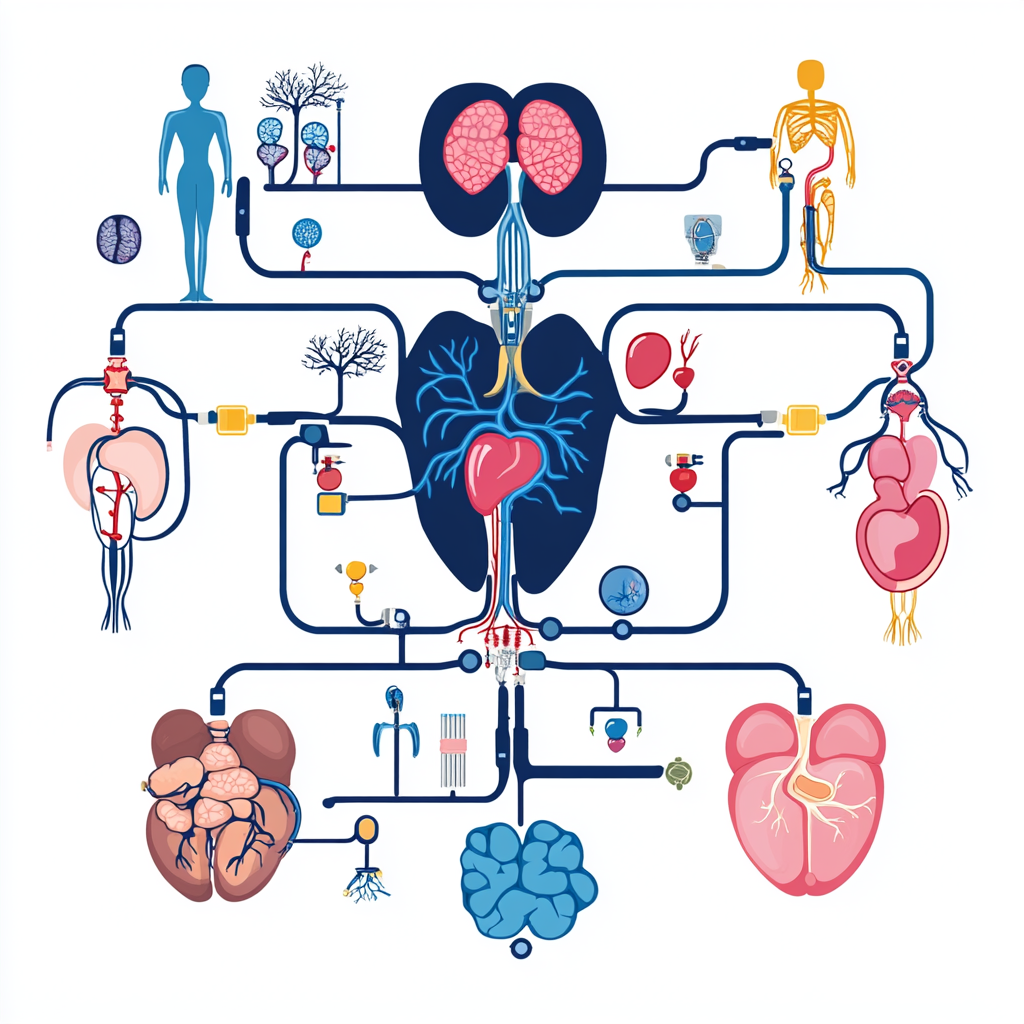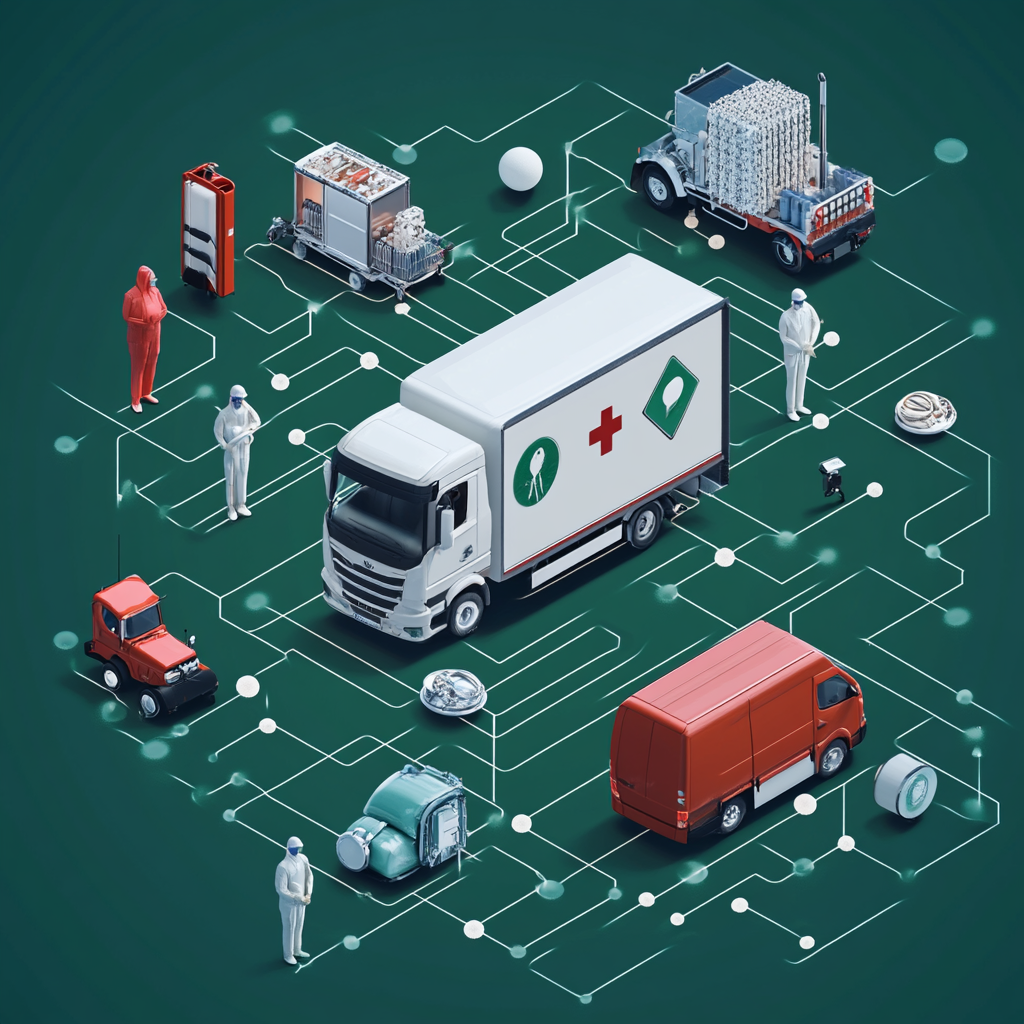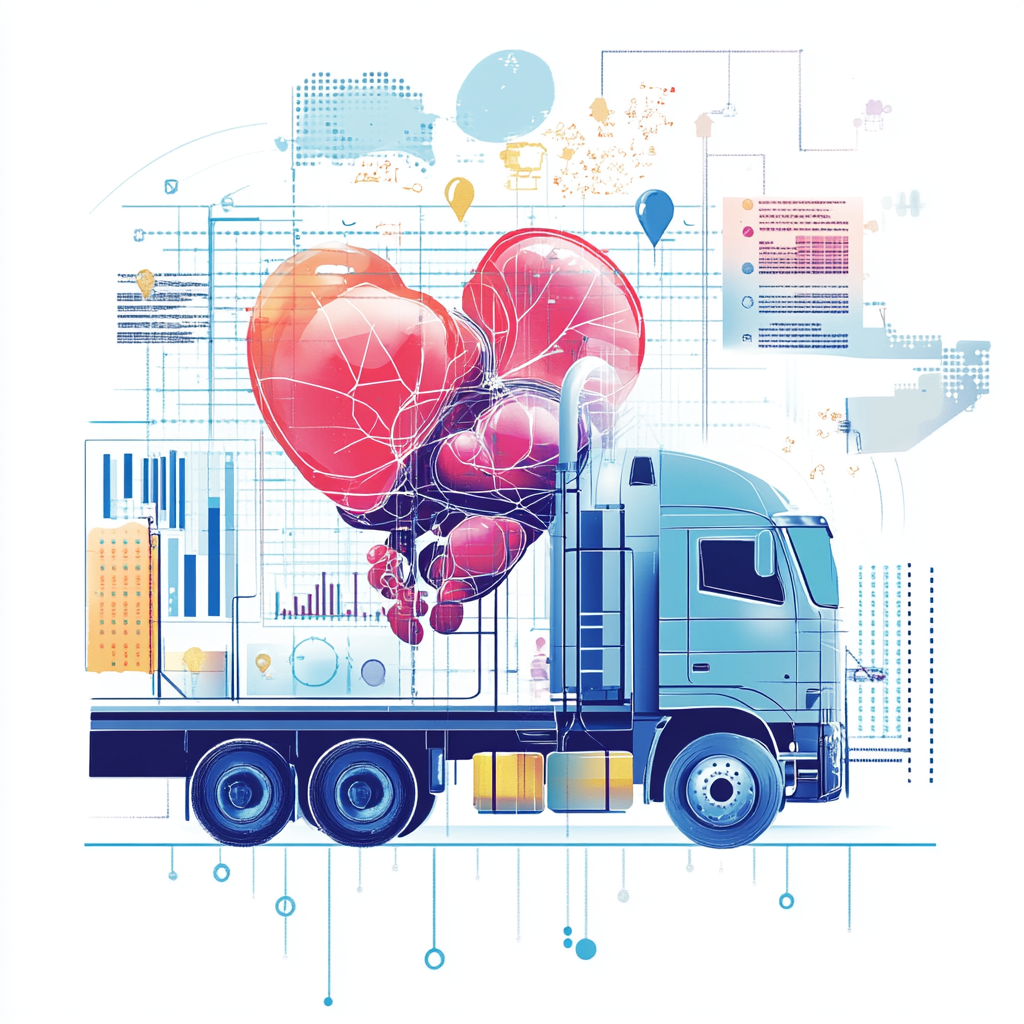Efficient Solutions in Organ Matching and Transport Logistics
How do medical teams match donated organs with recipients and transport them on time? This article dives into the key aspects of organ matching and transport logistics, highlighting the processes and challenges faced to save lives.
Key Takeaways
Organ matching involves complex processes such as blood typing, HLA typing, and crossmatch testing to ensure compatibility between donor and recipient.
Timely transport of organs is critical, as delays can compromise organ viability; advanced tracking technologies are essential for monitoring conditions during transport.
Effective coordination among medical teams and robust logistical planning are crucial to overcome challenges in organ transport and ultimately save lives.
The Organ Matching Process

Organ matching is a meticulous and highly technical endeavor. It starts with blood typing to ensure compatibility between donor and recipient. Blood type O is considered a universal donor, while type AB is a universal recipient, making these types particularly valuable in the realm of organ donation. Crossmatch testing is also performed to detect any adverse reactions if the donor’s blood cells mix with the recipient’s.
Human Leukocyte Antigen (HLA) typing identifies specific antigens that must match for a successful transplant. These antigens are proteins found on the surface of most cells in the body and play a significant role in the immune system’s ability to recognize foreign substances. The presence of antibodies against HLA antigens, often due to previous blood transfusions or pregnancies, can complicate the compatibility process and reduce the chances of a successful transplantation.
Proper labeling and accurate matching of donated organs are paramount. This precision underscores the critical role of transplant centers and medical professionals in matching every organ with the right recipient, ensuring that they are labeled appropriately.
Careful matching is about more than science; it’s about giving patients a second chance at life, whether it’s a heart, liver, lungs, or any other vital organ.
Importance of Timely Organ Transport

In organ transplantation, every minute counts. Timely transport prevents delays that can lead to irreversible damage. Even minor delays can escalate into life-threatening issues, making transportation speed critical. The process must be swift and efficient to ensure the organ remains viable upon arrival.
For example, heart tissues must arrive at the processor within 24 hours of recovery to remain viable. Unfortunately, one in three shipments is delayed in time-critical situations, highlighting the need for improved visibility and coordination. Lack of visibility can cause delays and potential loss of viability. Therefore, the process from recovery to transplantation must be tightly coordinated to avoid setbacks.
Timely transport is crucial. Whether a heart, kidney, or any other organ, the window of opportunity is incredibly narrow. The logistical challenges are significant, but the stakes are high, necessitating robust systems to minimize potential delays. This urgency drives continuous improvement in transport logistics, ensuring every donated organ has the best chance of saving a life.
Did you know that you can get from Manhattan to JFK in under 5 minutes without driving?
Blade offers seamless helicopter transfers from our West 30th Street Lounge in Manhattan to JFK Airport in just 5 minutes from $195 per seat.
Skip the traffic and ditch the stress with Blade's year-round airport service.

Methods of Preserving Transplantable Organs
Preserving transplantable organs during transport highlights the differences between organ and tissue transport, requiring specialized techniques. This technique extends organ viability during transit, ensuring functionality upon arrival at the transplant center.
Cold storage solutions, such as the University of Wisconsin solution, are designed to enhance the preservation of organs like kidneys. This solution maintains organ viability by providing necessary nutrients and reducing cellular damage during transport. For lungs, specific protective solutions counteract damage caused by oxygen deprivation during transport.
Normothermic machine perfusion, an emerging technology, maintains organs at body temperature with continuous blood flow. This technique preserves the organ and allows better assessment of its function before transplantation.
Advancements in preservation technologies could save the healthcare system billions by reducing the need for urgent air transport and cutting logistical costs. These methods ensure that each organ is carefully preserved and arrives in optimal condition, ready to save lives.
Logistics of Organ Recovery and Transport

Transporting organs requires exceptional logistical complexity. Every step, from organ recovery to final transplantation, must be meticulously planned and executed. It involves coordinating with multiple teams and ensuring precise timing, as even small delays can have significant consequences. Logistics are not just about moving an organ from point A to point B but ensuring it arrives in the same condition it was recovered.
Over 100 million transport options are available for a shipment between locations, adding another layer of complexity. Long-distance transport often requires flights or private charters to ensure timely arrival. These methods overcome geographical barriers, ensuring efficient organ transport to their destination within the critical time window.
Certified couriers are essential in local organ transport. These professionals handle organs with care and ensure prompt delivery to transplant centers. Certified couriers add security and reliability to the transport process, ensuring organs are handled appropriately and arrive in the best condition.
The logistics of organ recovery and transport demonstrate the intricate planning and coordination required to save lives. Each step is a race against time, with the goal of providing patients with the life-saving organs they need.
Challenges in Organ Transport
The logistical complexity of organ transport is compounded by challenges that can impact timeliness and success. Outdated technology and unforeseeable circumstances like traffic and weather exacerbate time constraints in organ air transport, complicating the planning of time-critical shipments. These factors make it difficult to guarantee timely arrival, adding uncertainty to an already delicate process.
Healthcare professionals involved in organ transport often face high stress levels, which can lead to potential errors in decision-making and collaboration. The narrow safety margins in organ transport mean little room for error, as any delay can compromise organ viability. This high-pressure environment requires meticulous planning and flawless execution to ensure every organ reaches its recipient on time.
These challenges highlight the need for continuous improvements in organ transport logistics. By addressing these issues and leveraging advanced technologies, the medical community can enhance efficiency and reliability, ultimately saving more lives.
Advanced Tracking Technologies for Organ Transport
Advanced tracking technologies are revolutionizing organ transport, offering new levels of security and efficiency. Secure GPS monitoring allows remote tracking of transport devices, providing real-time updates on the organ’s location and condition. This technology eliminates the need for on-site personnel, reducing human error and ensuring the organ is always within sight.
Real-time temperature monitoring is another critical feature of advanced tracking technologies. These systems continuously monitor temperature conditions during transport, ensuring organs remain within safe limits. Any deviation from the optimal temperature range can be quickly addressed, preventing potential damage.
Web-based portals provide easy access to real-time data on the status and logistics of organ transport. These platforms allow medical teams to monitor the organ’s journey from recovery to transplantation, offering a consolidated view.
The VantagePoint™ tracking solution, for example, consolidates communication between transport teams, providing live updates and oversight of the organ’s condition in transit. These technologies enhance the reliability and efficiency of organ transport, ensuring every organ has the best chance of saving a life.
Did you know that you can get from Manhattan to JFK in under 5 minutes without driving?
Blade offers seamless helicopter transfers from our West 30th Street Lounge in Manhattan to JFK Airport in just 5 minutes from $195 per seat.
Skip the traffic and ditch the stress with Blade's year-round airport service.

Coordination Among Medical Teams
Successful organ transplantation depends on effective interprofessional teamwork among diverse medical specialties. Strong interpersonal relationships and trust among team members are crucial for managing conflicts and ensuring effective communication. Regular multidisciplinary meetings maintain open lines of communication, improve patient care, and prevent workflow delays.
Psychosocial care managers bridge communication gaps between various medical disciplines within transplant teams. Their involvement ensures all team members are on the same page and that potential issues are addressed promptly. Co-location of transplant team members fosters collaboration and enhances operational efficiency.
Clearly defined roles and responsibilities among team members prevent confusion and improve coordination in patient care. Integrating mental health awareness and support initiatives within transplant teams can enhance team dynamics and overall patient care. Effective coordination among medical teams is essential for ensuring every transplant procedure goes smoothly and that patients receive the best possible care.
Solutions to Overcome Transport Delays
Delays in organ transport can lead to significant profit losses and missed opportunities. Most critically, they can result in loss of life. To mitigate these delays, identifying and addressing the root causes is essential. Minor errors by dispatchers, couriers, or cargo handlers can lead to significant delays in the transport process. Implementing special solutions and protocols can minimize these errors.
One solution is advanced tracking technologies, which provide real-time updates and visibility into the transport process. This can help identify and address issues that arise, ensuring organs arrive on time. Training and education programs for all personnel involved in transport can reduce errors and improve overall efficiency.
Implementing these solutions will save lives and reduce the financial burden associated with organ transport delays. By addressing challenges head-on and leveraging the latest technologies, we can improve the reliability and efficiency of organ transport, ensuring every organ has the best chance of saving a life.
Cost Implications of Organ Transport Logistics

Advancements in organ preservation techniques can significantly save on healthcare costs. By reducing the frequency of post-transplant complications, these advancements can decrease hospital admission costs and improve patient outcomes. This not only benefits the patients but also eases the financial burden on the healthcare system.
Additionally, improved preservation methods can reduce the need for urgent air transport, which is often costly. By extending the preservation duration of organs, ground transport can be facilitated, significantly cutting logistical costs. These cost savings can then be reinvested into further advancements in organ preservation and transport, creating a positive feedback loop that benefits both patients and the healthcare system.
Bottom Line: Organ Matching and Transport Logistics
The journey of an organ from donor to recipient is a complex and critical process that requires meticulous planning, coordination, and advanced technologies. From the initial matching process to the final transplantation, every step must be executed with precision to ensure the best outcomes for patients. Timely transport, effective preservation methods, and advanced tracking technologies are all essential components of this process. By addressing the challenges and continuously improving the logistics of organ transport, we can save more lives and provide hope to patients in need. The future of organ transplantation is bright, and with continued advancements, we can make the gift of life even more accessible.
FAQs about Organ Matching and Transport Logistics
Why is timely organ transport so critical?
Timely organ transport is critical as even minor delays can compromise the organ's viability, rendering it unsuitable for transplantation. Therefore, prompt delivery is essential to ensure successful transplant outcomes.
What are some common methods used to preserve transplantable organs?
To preserve transplantable organs effectively, hypothermic preservation is utilized to cool and slow metabolic processes, while normothermic machine perfusion maintains organs at body temperature with continuous blood flow. These methods ensure better viability for successful transplants.
How do advanced tracking technologies improve organ transport?
Advanced tracking technologies significantly enhance organ transport by offering real-time updates on the organ's location and condition, ensuring it stays within safe temperature limits and minimizing delays. This results in improved organ preservation and better outcomes for recipients.
What challenges do medical teams face in organ transport?
Medical teams encounter significant challenges in organ transport, including outdated technology, environmental factors such as traffic and weather, and the high stress levels that can contribute to errors. These issues underscore the critical need for enhancements in logistics and support systems to ensure successful organ transplants.
How can cost savings in organ transport logistics be achieved?
Cost savings in organ transport logistics can be achieved by implementing advanced organ preservation techniques that minimize the necessity for urgent air transport and reduce post-transplant complications, thereby lowering hospital admission costs.
Disclaimer:
Please be aware that the content on this page has been generated by using artificial intelligence language models and may contain errors, inconsistencies, or outdated information. It is provided as-is without any warranties or guarantees of accuracy. We strongly recommend using this content as a starting point for further research. We disclaim any liability for damages or losses resulting from the use or reliance on this content.